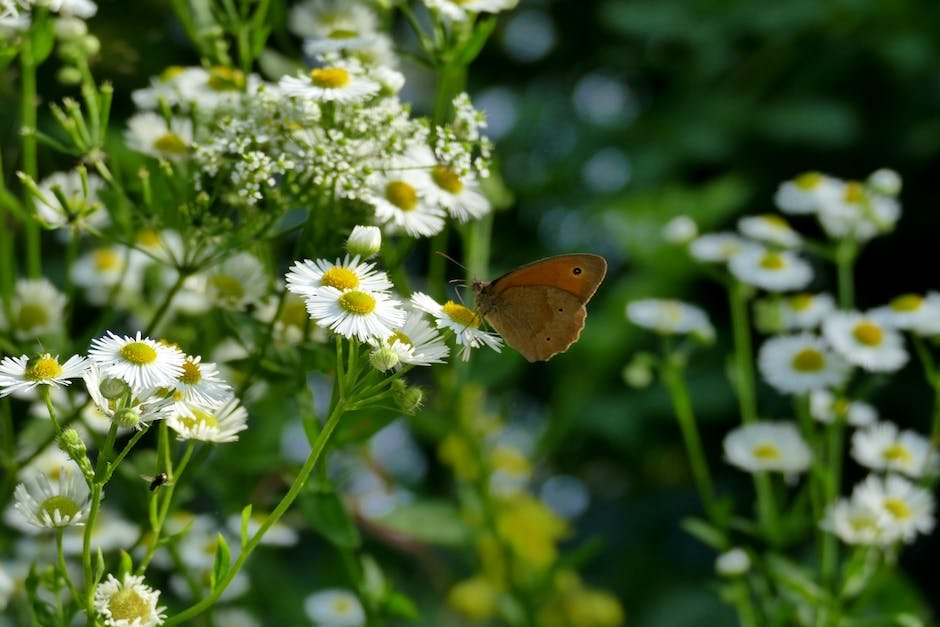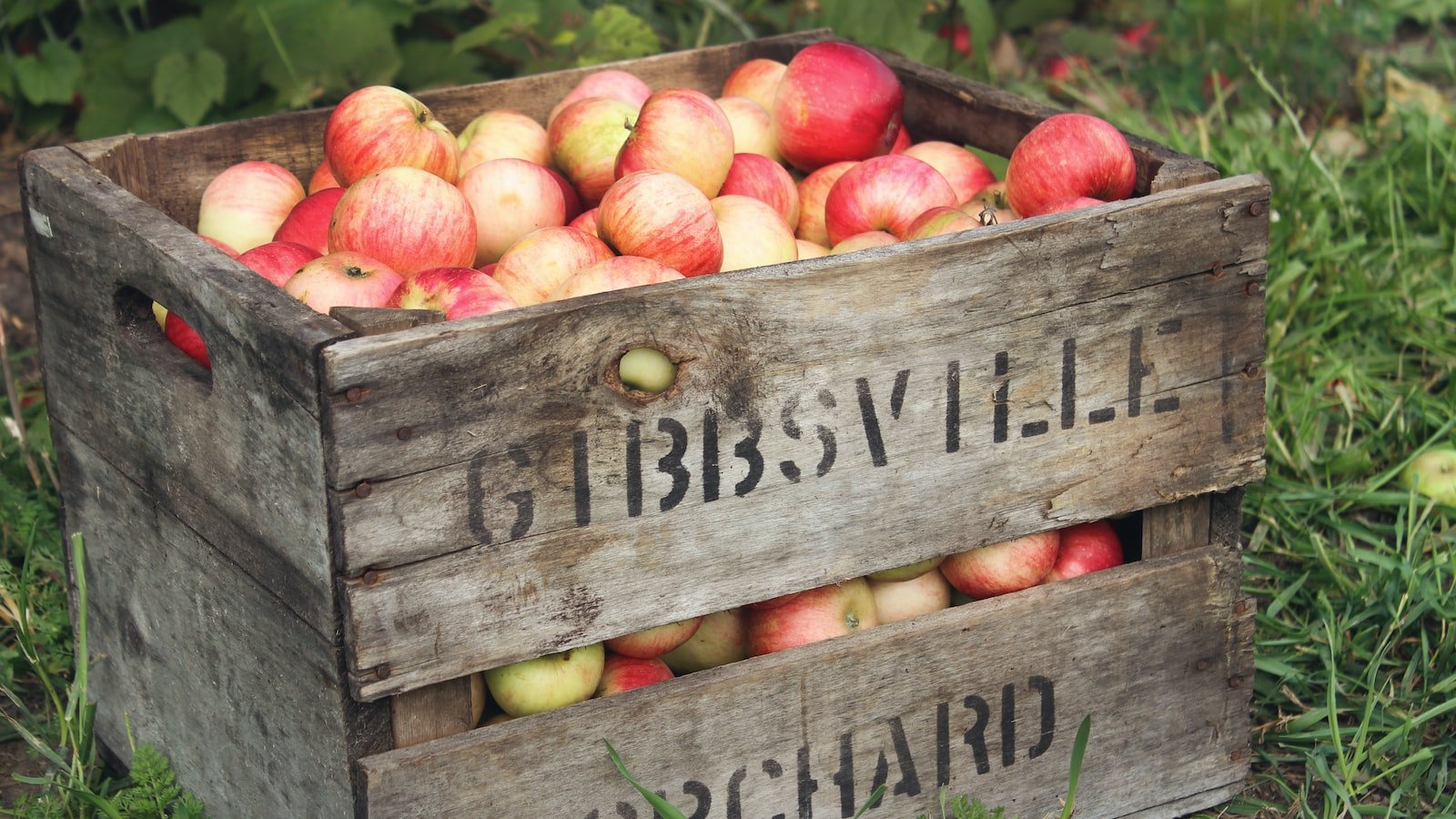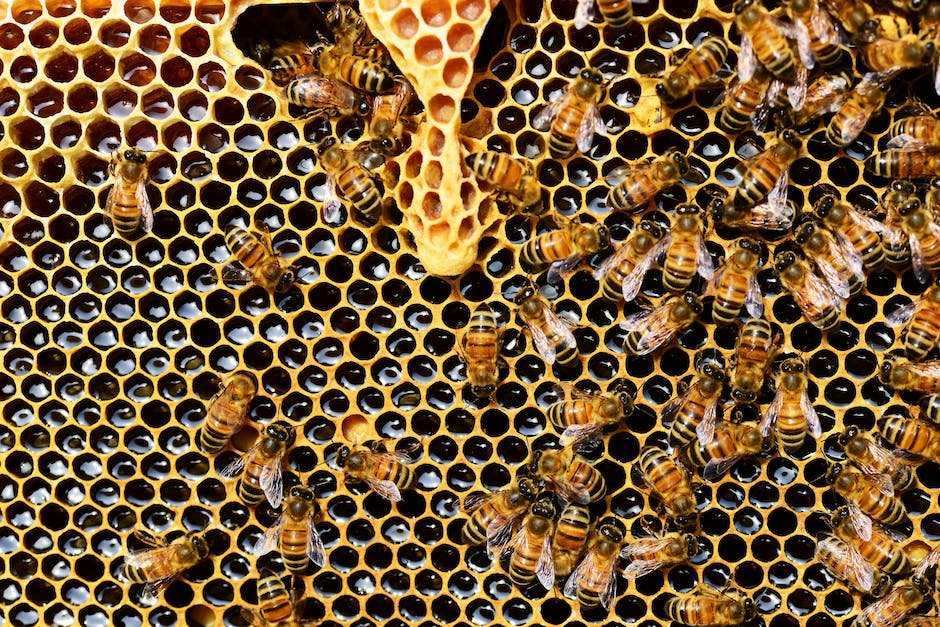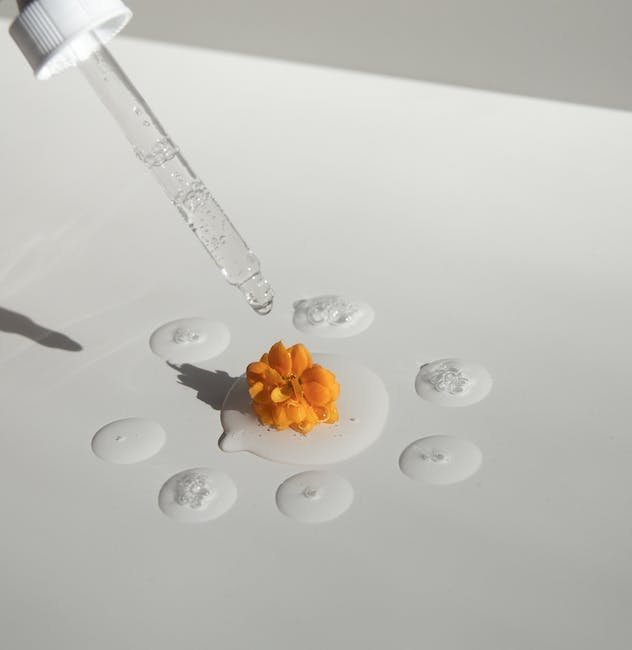Imagine stepping into a world filled with vibrant colors, sweet fragrances, and a symphony of gentle buzzing. An enchanting paradise where industrious pollinators flutter from flower to flower, diligently carrying out their vital work. Bees, the unsung heroes of our ecosystems, perform an irreplaceable role in pollinating plants, ensuring the survival of countless species, including our own. Curious about how to create a haven for these remarkable creatures? Look no further! In this article, we will delve into the secrets of crafting a pollinator paradise right in your own backyard. Armed with some planting tips and a touch of creativity, you’ll soon be sowing the seeds for a harmonious coexistence with our buzzing friends. So, grab your gardening gloves and prepare to embark on a journey of discovery, as we unlock the keys to a flourishing bee-friendly oasis.
Table of Contents
- Planning Your Pollinator Garden
- Choosing the Right Plants for Bees
- Creating a Welcoming Habitat for Bees
- Providing Essential Resources for Pollinators
- Maintenance Tips for a Thriving Pollinator Paradise
- Q&A
- In Summary

Planning Your Pollinator Garden
Creating a beautiful and thriving pollinator garden requires careful planning. By considering a few key factors, you can transform your outdoor space into a buzzing haven for bees, butterflies, and other vital pollinators.
1. Selecting the Right Plants: Choose a variety of native plants that provide nectar and pollen throughout the year. By including different flower shapes, colors, and sizes, you can attract a diverse range of pollinators. Don’t forget to incorporate plants that serve as host species for butterfly larvae.
2. Creating a Welcoming Habitat: Design your garden to provide food, shelter, and water for pollinators. Incorporate features such as a shallow birdbath or small pond for drinking and cooling down. Additionally, leave some patchy bare ground for solitary bees and provide nesting materials like twigs and small stones.
3. Sustainable Gardening Practices: Limit your use of pesticides and opt for organic gardening methods. Instead of chemical fertilizers, utilize compost or natural alternatives. Mulching can help retain moisture in the soil and suppress weeds. Aim to conserve water by using drip irrigation or collecting rainwater for your garden.
By taking these steps, you’ll be well on your way to creating a beautiful and beneficial pollinator garden. Remember, every garden plays a crucial role in supporting the pollinators that contribute to our ecosystem’s health and biodiversity.

Choosing the Right Plants for Bees
When it comes to attracting bees to your garden, selecting the right plants is of utmost importance. Bees are not only fascinating creatures but also vital pollinators that contribute to the natural ecosystem. In order to create a bee-friendly oasis, it is essential to choose plants that provide the necessary food and habitat for these buzzing friends.
Consider the following tips to ensure you choose the right plants for bees:
- Choose native flowers: Bees are naturally attracted to plants that are native to their specific region and have evolved alongside them. Native flowers often provide ample nectar and pollen, making them ideal food sources for bees.
- Vary your plant selection: Different species of bees have diverse preferences when it comes to flowers. To cater to a range of bees, opt for a variety of plants with different colors, shapes, and bloom times. This will ensure a continuous source of food throughout the seasons.
- Plant in clusters: Bees are attracted to large patches of the same flower species, rather than scattered individual plants. By clustering your chosen plants together, you create a visually appealing and irresistible feast for the bees.
- Go organic: Avoid using pesticides, herbicides, and other chemicals in your garden. These harmful substances can be detrimental to bees and other beneficial insects. Instead, opt for organic gardening methods to create a safe haven for these important pollinators.
- Provide nesting habitat: In addition to food sources, bees also need suitable nesting spaces. Consider planting shrubs, creating undisturbed areas of soil, or even installing bee houses to provide shelter and nesting sites for bees.
By selecting the right plants and creating an inviting habitat, you can not only attract bees to your garden but also contribute to their overall well-being and conservation. So, let your garden bloom with an array of bee-friendly plants and enjoy the harmonious buzz of these incredible pollinators.

Creating a Welcoming Habitat for Bees
Bees play a vital role in our ecosystem, pollinating plants and ensuring the production of fruits, vegetables, and nuts. However, urbanization and the vast use of pesticides have led to a decline in bee populations. To help these buzzing creatures thrive, we can take simple steps to create a welcoming habitat for them.
1. Plant a variety of flowers:
Bees are attracted to a diverse range of flowers, so it’s important to provide a mix of colors, shapes, and scents in your garden. Choose native flowering plants as they are better adapted to your local environment and will provide the most benefit to bees.
2. Provide water sources:
Bees need water to drink, especially on warm days. Create shallow water sources, like a birdbath or a shallow dish with pebbles, where bees can safely access water without drowning. Ensure the water source is regularly topped up and clean.
3. Avoid pesticide use:
Pesticides can be harmful to bees and other beneficial insects. Instead, opt for organic pest control methods such as companion planting, manual removal of pests, or using organic sprays specifically designed to minimize harm to bees.
By implementing these simple practices, you can make your garden or outdoor space a sanctuary for bees. Not only will you be providing them with a safe haven, but you’ll also be contributing to the overall health of our environment.

Providing Essential Resources for Pollinators
Our mission is to create a thriving environment for our pollinator friends by providing them with the essential resources they need. We understand the vital role that pollinators play in our ecosystem, and we are committed to preserving their habitats and ensuring their survival.
How do we provide these essential resources? Here are a few ways:
- Native plant gardens: We cultivate gardens filled with a diverse range of native plants that are specifically chosen to attract and nourish pollinators. These flowers provide a rich source of nectar and pollen, giving our buzzing friends the sustenance they need to thrive.
- Water stations: To quench the thirst of our pollinator pals, we set up strategically placed water stations with shallow bowls or bird baths. These provide a refreshing oasis for bees, butterflies, and other flying critters to rehydrate and rejuvenate.
- Nesting sites: We create and maintain nesting sites to encourage pollinators to make themselves at home. These can include bee houses, bird boxes, and butterfly host plants. By giving them safe spaces to lay their eggs or build their nests, we are ensuring future generations of pollinators.
By providing these essential resources, we are not only helping pollinators survive, but we are also promoting biodiversity and contributing to the overall health of our environment. Join us in our mission to support these amazing creatures and create a world filled with vibrant flowers and bustling bee colonies.
Maintenance Tips for a Thriving Pollinator Paradise
Creating a flourishing pollinator paradise in your backyard requires not only initial planning and planting but also ongoing maintenance. Here are some essential tips to keep your pollinator garden healthy and thriving:
- Regular Weeding: To ensure maximum pollinator attraction, it’s crucial to keep your garden weed-free. Regularly remove unwanted plants that may compete for resources or overshadow the pollinator-friendly flowers.
- Watering: Providing a reliable water source is vital for pollinators. Install a shallow dish or a decorative birdbath filled with clean water. Remember to refill it regularly, especially during dry periods, to keep those thirsty pollinators happy.
- Pesticide-Free Zone: Avoid using harmful pesticides as they can harm pollinators. Embrace organic pest-control methods and rely on natural predators to keep your garden’s ecosystem balanced.
- Continuous Blooming: Introduce a variety of native plants that bloom at different times throughout the year to provide a continuous food source for pollinators. Include annuals, perennials, and flowering shrubs to ensure a diverse and enticing menu for bees, butterflies, and other pollinators.
- Regular Pruning: Regularly prune your plants to maintain their shape, promote new growth, and prolong flowering. Trim away any dead or diseased branches to preserve the overall health of your garden.
By implementing these maintenance tips, you’ll create an enchanting sanctuary for pollinators to thrive and play their crucial role in our ecosystem. Remember, a little care goes a long way in fostering a pollinator paradise in your very own backyard!
Q&A
Q: Why is it important to create a pollinator paradise?
A: Creating a pollinator paradise is crucial because pollinators like bees play a vital role in our ecosystem by aiding in the pollination of plants, ensuring the production of fruits, seeds, and healthy habitats for other wildlife.
Q: What plants are best for attracting bees to your garden?
A: Bees are particularly attracted to nectar and pollen-rich flowers such as lavender, sunflowers, coneflowers, and wildflowers. These plants provide the essential resources bees need for their survival and reproduction.
Q: How can I provide a suitable habitat for bees?
A: To create a suitable habitat, you can incorporate features like bee houses or uncut grassy areas. Additionally, leaving some bare ground for nesting bees and minimizing pesticide use will help provide a safe environment for bees.
Q: Are there specific planting tips I should follow?
A: Yes, some tips include choosing a variety of flowering plants that bloom at different times throughout the year to provide a continuous food source for bees. Planting in clusters can also help attract more bees to your garden.
Q: What are the benefits of planting native plants?
A: Native plants are adapted to the local climate, making them easier to maintain and more appealing to native bees. By planting native species, you also contribute to preserving local biodiversity and supporting the natural balance of your region.
Q: How can I ensure a pesticide-free environment for bees?
A: Opt for natural alternatives like neem oil or insecticidal soaps to control pests. Additionally, attracting beneficial insects that prey on pests can help maintain a healthy balance and minimize the need for harmful pesticides.
Q: Can I create a pollinator paradise even with limited space?
A: Yes, even with limited space, you can create a pollinator-friendly environment by using containers or vertical gardening techniques. Planting a variety of flowers in hanging baskets and window boxes can attract bees even in small spaces.
Q: Are there any additional steps I can take to support pollinators?
A: Supporting local beekeepers, promoting awareness about the importance of pollinators, and engaging in citizen science projects such as bee monitoring can all contribute to the well-being of pollinators and help create a sustainable habitat for them.
In Summary
As we come to the end of our journey into creating a pollinator paradise, we hope that you’ve gained valuable insights and newfound appreciation for the incredible world of bees. These tiny creatures play a crucial role in our ecosystem, diligently pollinating our plants and ensuring the survival of countless species. By implementing the planting tips and strategies discussed, you have taken a proactive step towards supporting these tireless workers and bringing a burst of vibrant life into your surroundings.
Imagine stepping out into a sea of colors, as blooming flowers dance in harmony with the gentle buzz of bees. Picture the satisfaction of knowing that your garden is a safe haven, where bees can find sanctuary, nourishment, and respite from the constant challenges they face. From creating diverse flowerbeds to providing sources of water and shelter, you have transformed your space into a beacon of hope for these incredible pollinators.
But let’s not stop here. Let this be the beginning of a beautiful journey towards a more sustainable future. Share your knowledge, spread the word, and inspire others to follow suit. Encourage your neighbors, friends, and communities to join hands in creating a network of pollinator paradises, aiming to restore and protect the delicate balance of our natural world. Together, we can forge a path towards harmony, where humans and bees coexist in perfect symbiosis.
Remember, even the smallest actions can create a cascading effect of positive change. As you witness the fruit of your labor, be it more abundant flower blossoms or the mesmerizing sight of buzzing bees, take a moment to relish in the joy that comes from making a difference. By opening your hearts and embracing the beauty and importance of these remarkable creatures, you have not only crafted a pollinator paradise but have also become an ambassador for change.
So, as you bid farewell to this endeavor, take pride in the sanctuary you’ve crafted and the impact you’ve made. The journey towards a pollinator paradise is never complete, as nature is always evolving, and so too must we adapt. Continue to learn, explore, and experiment, for the possibilities are as endless as the flight of a bee.
As an affiliate, my content may feature links to products I personally use and recommend. By taking action, like subscribing or making a purchase, you’ll be supporting my work and fueling my taco cravings at the same time. Win-win, right?
Want to read more? Check out our Affiliate Disclosure page.